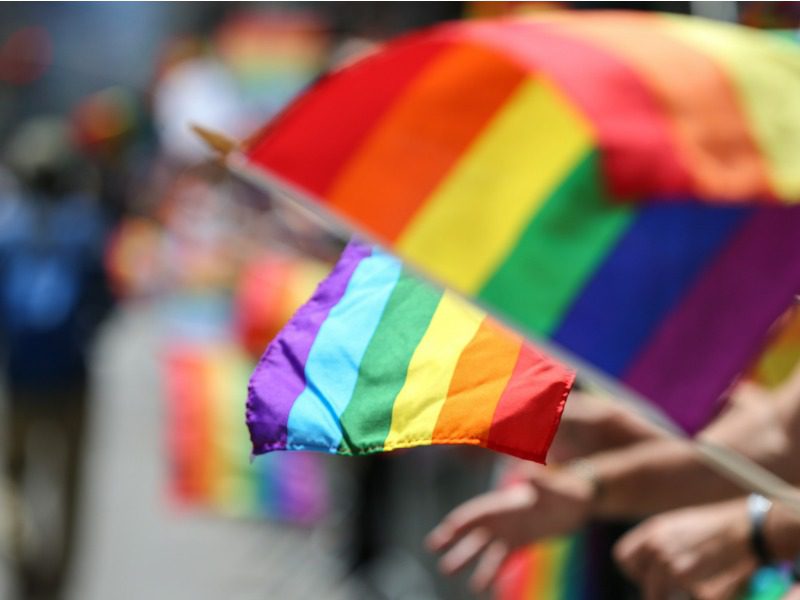How the industry can better promote 2SLGBTQ+ inclusion

Many Canadian P&C companies have shown their support for 2SLGBTQ+ Pride by emblazoning their company logo in rainbow colourways. But creating employee-resource groups, recruitment practices and marketing that embraces 2SLGBTQ+ employees, stakeholders and policyholders is critical for moving the dial further, industry experts say.
Although Pride Month is coming to a close, the effort to create 2SLGBTQ+ inclusion in the workplace doesn’t stop here.
Two per cent of industry respondents identify as LGBT, according to a recent Canadian Underwriter survey. One per cent of respondents further identify as two-spirit (2S), and 1% said their gender identity was not listed. No respondents self-identified as transgender men or women, non-binary, gender fluid, or genderqueer.
Comparatively, 4% of the total population of Canada identified as LGBTQ+, according to Statistics Canada in 2018.
The first step for companies to better represent their employee base may lie in determining how their employees identify via internal surveys, industry experts say.
“We actually have about 5% of our population at Wawanesa [Canada] that identify as 2SLGBTQ+,” says James Bond, senior vice president and chief legal and governance officer at Wawanesa Insurance. At the U.S office, he says, 10% of employees identify as 2SLGBTQ+.
“I don’t know of any other leaders across the industry at the senior vice president level or above that are out members of the [2SLGBTQ+] community. If I’m the only one at this level, I’m happy to be that person, and I think my presence says something positive about the industry generally,” says Bond.
However, it’s important to note not all employees may feel comfortable self-identifying, another expert says—especially if other inclusion initiatives are not in place.
“It’s not only important how many employees self-identify, but also how many choose not to. Those that wish not to self-identify are telling you something about your culture when they choose not to,” says Sonia Boyle, chief people officer at Gore Mutual.
To increase inclusion and create a safe space for staff, companies may consider creating dedicated 2SLGBTQ+ employee-resource groups or DEI councils.
“It’s incumbent upon organizations to allow for those conversations to happen in a safe way where people can get together, can ask questions knowing that they’re coming from a good place, and that they’re intended to provide further learning,” says Bond.
Educational workshops that focus on inclusivity may also be of benefit to companies and their employees.
“Wouldn’t it be great to have, let’s say for Pride Month, a panel of senior leaders in the P&C insurance industry that self-identify as 2SLGBTQ+ that can speak to their experiences, career trajectories and advice to colleagues in the insurance industry that may be struggling with the lack of representation they see across our industry?” suggests Gaby Polanco-Sorto, head of purpose and sustainability at Gore Mutual.
While it’s important to prioritize 2SLGBTQ+ inclusion within an organization, ensuring that recruitment processes are welcoming to all candidates is crucial.
“Onboarding is incredibly critical and can make or break an employee’s perception of the organization,” says Boyle. “It’s about setting targets to increase your representation of 2SLGBTQ+ candidates in your candidate pool and ensure you have practices already in place that build trust and safety within your culture to welcome all colleagues.”
Website pages, blog posts and job descriptions that highlight how companies prioritize 2SLGBTQ+ inclusion are important factors when it comes to onboarding future employees and policyholders alike.
“Consumers hold organizations to a high standard for DEI efforts,” says Polanco-Sorto.
“When you have a lack of diversity, you are not truly representative of your consumer base,” Boyle adds. “When you have a diverse workforce…you are better able to offer products and services that are geared to the diversity of consumers, and better able to anticipate trends and needs.”
Ultimately though, creating inclusion in the workplace is not a one-size-fits-all initiative. A company’s approach should be “unique, authentic and fit within the culture of the organization,” says Boyle.
Feature image by iStock.com/Anna Sergeeva



